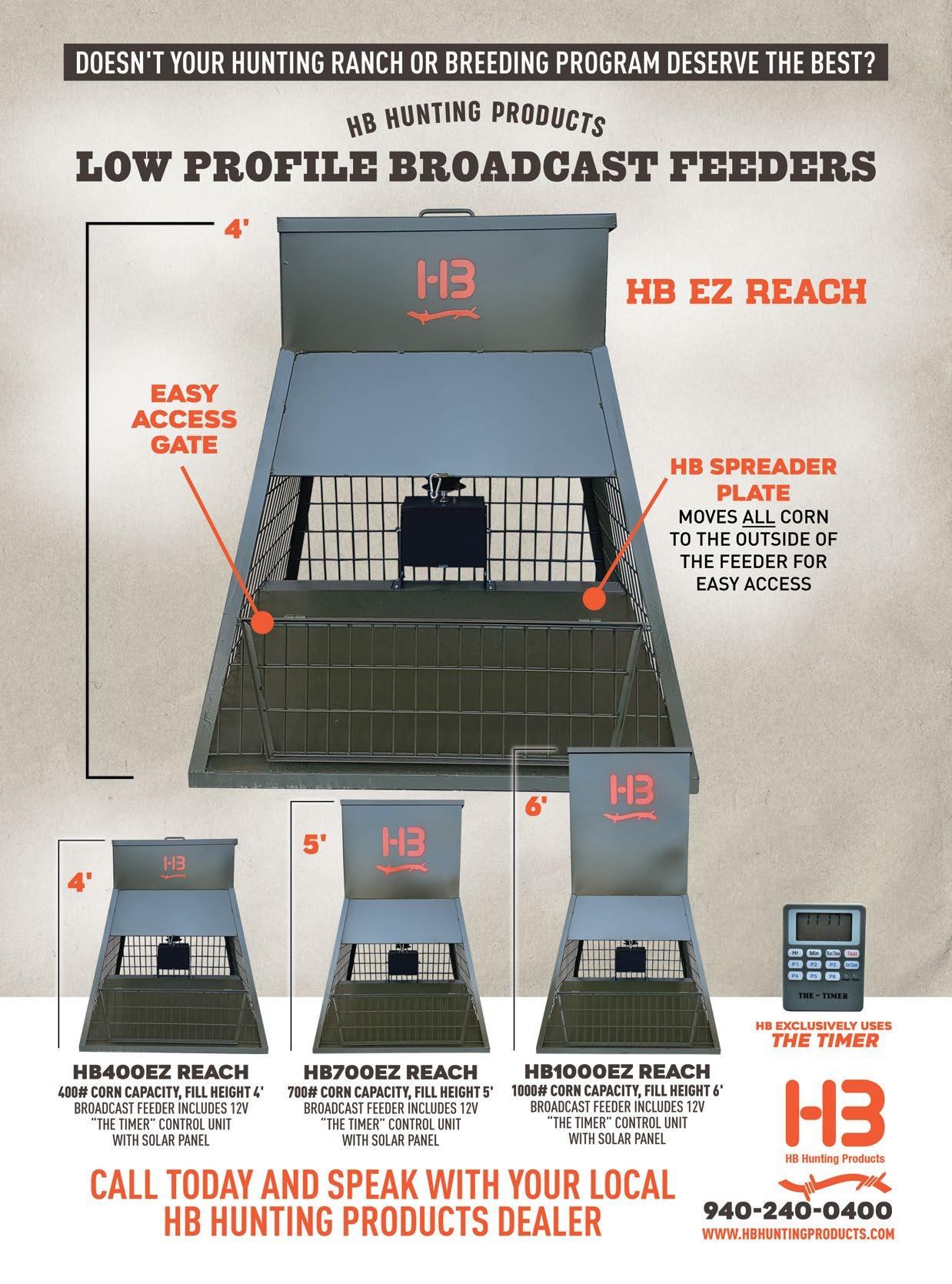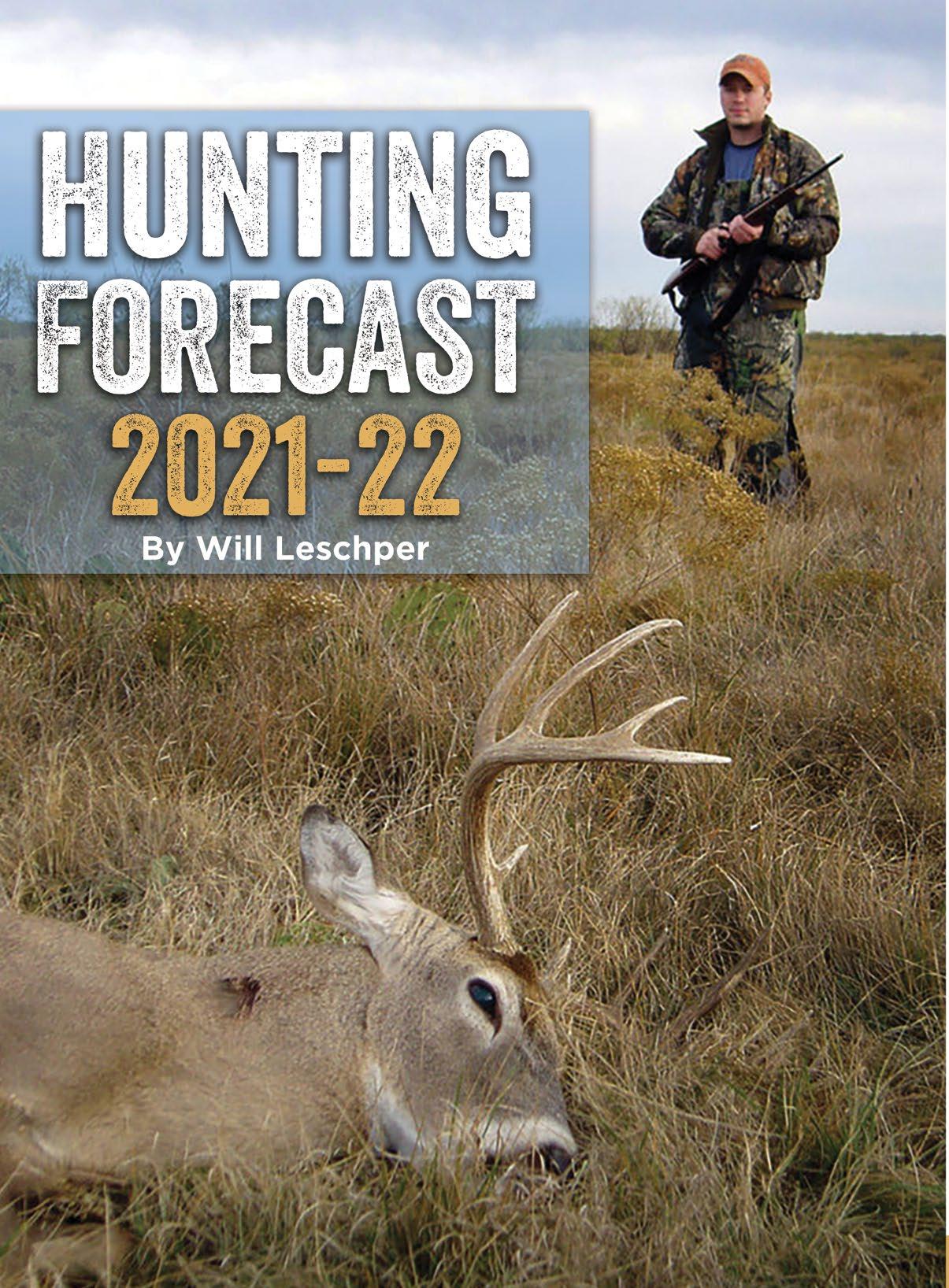
11 minute read
2021-22 Hunting Season Forecast
West Texas may not be on par with the Hill Country or South Texas in terms of quantity or quality in many hunters’ minds, but it’s a great place to find good bucks each fall and winter.
The Lone Star state is second to none in terms of hunting opportunities and this fall and winter will again feature plenty of good seasons for big and small game. Here is the annual hunting forecast for some of our most sought-after species.
White-Tailed Deer
Alan Cain, white-tailed deer program leader for the Texas Parks and Wildlife Department, said the hunting outlook – as usual – is bright for both quantity and quality from the Red River to the Rio Grande. The whitetail population figure has remained stable at more than 5 million animals in recent years and the overall harvest also has been similar the past couple of years.
With good carryover and range conditions, it’s going to be another good year for Texas deer.
“If you look back at last year’s harvest, it’s about 852,000 deer statewide,” he said. “The year before that it was estimated at about 846,000. The overall hunter success rate was 63% statewide last season and was higher in the South Texas plains at 79%. The harvest figure was up which can be attributed some to COVID, but the funny thing is the overall hunter number was actually below the previous year.”
Cain noted that the traditional strongholds of the Hill County and South Texas brush country again led the way in overall harvest figures, and he expects nothing to change this season.
“The overall harvest in the Edwards Plateau was above 255,000 deer with about 124,000 of those being bucks,” he said. “In South Texas, the harvest was about 133,000 and about 70,000 bucks. Those places and the Cross Timbers should fare well again for the obvious reasons that they just have prime habitat and larger population numbers.
“In some counties in South Texas, you’ll find a deer to every 40 acres while in the area around Mason the density is just below a deer to every four acres.”
Timely spring rains, including torrential downpours in South Texas, have set the stage for deer of all sizes to be in good shape this fall and winter, Cain said. That includes what should be a good fawn crop.
“In terms of antler quality, there will be pockets of the state – western South Texas brush country, western edge of the Hill Country and the Trans-Pecos – that didn’t get good moisture, but by and large, areas like the Cross Timbers and Hill Country as a whole especially were green and the animals were healthy,” Cain said.
Cain said that in terms of deer management, we’re living in an unprecedented era, which bodes well not just for this season but for years to come. He said that management has been beneficial to hunters taking better bucks. He noted that the majority of bucks taken is in the 3½- or 4½-year-old age class, but roughly 15% of the overall buck harvest is composed of older deer, ones classified as 5½ years old or older. He also pointed to antler restrictions in place in dozens of counties as being beneficial to letting deer get more age to them.
“Deer hunting has become a year-round pursuit, not just a season that runs a few months,” he said. “Hunters have become more knowledgeable than they ever have been and that’s a good thing for the state. Dry, wet, it doesn’t necessarily matter because folks are more engaged in deer management, so you’ll see plenty of big bucks taken across the state. The bottom line is this: If you take care of your place, you’re going to have a good season, unless something unforeseen happens like the really bad drought years we’ve had that also have been really hot.”
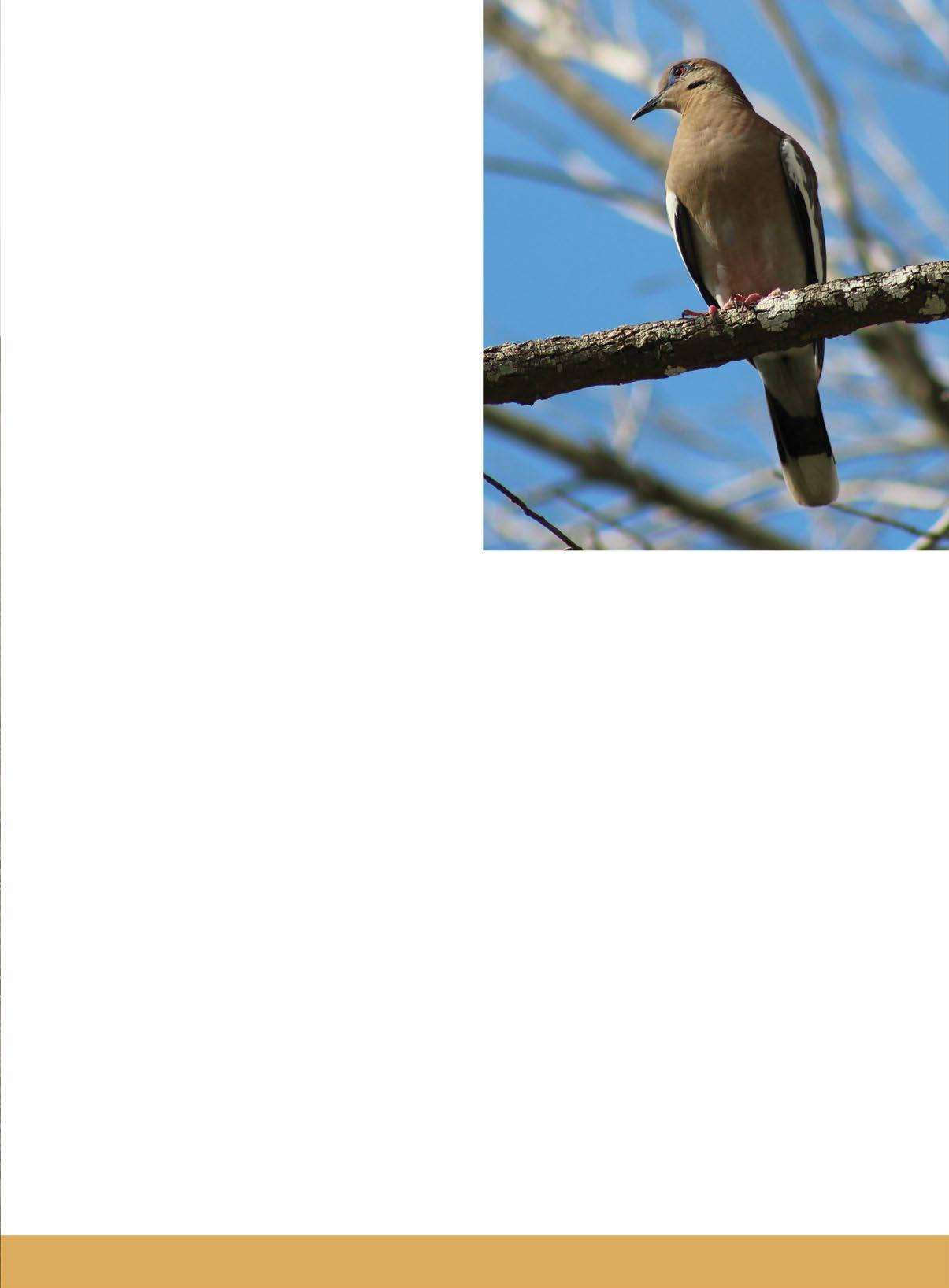
Doves
Texas dove hunting is a rite of passage in introducing youngsters and first-timers, and simply put, we’ve got the best mourning dove and white-winged dove hunting in the country. The Lone Star state boasts fall dove populations larger than any other state and its roughly 400,000 dove hunters harvest about five million birds annually.
As the kickoff to fall and winter hunting seasons, there’s always huge interest from hunters across the state, and this year will be no different. Hopefully you stocked up on shells before the pandemic stripped the shelves of almost all ammo!
Owen Fitzsimmons, dove program leader for TPWD, said hunting opportunities have never been more readily available to Texans, with public hunting access available near metro areas like San Antonio and Houston that can harbor lots of “urban doves.”
“Based on the rainfall and moisture levels we’ve seen in the spring, that’s a really good indicator of dove production,” he said. “That moisture is beneficial and provides plenty of natural forage for birds. However, that kind of rain in September can make hunting tough.”
Mourning doves will always be an economic driver for hunts in Texas with millions of doves in the breeding population. But the whitewing outlook as a whole, is on the rise, with the state supporting millions of whitewings. Whitewings, traditionally a Rio Grande Valley species in the past, are now found all across Texas, especially near urban centers that support breeding populations.
“There are a lot of hunters around metro areas like the Me-
The white-winged dove – slightly larger than its mourning dove cousin – has expanded its range to include the entirety of Texas.
troplex and San Antonio that are able to go a couple of minutes outside the city and hit some agricultural fields and they’re seeing some fantastic whitewing hunts,” he said. It’s the same story around Houston.”
One big change to dove season this year is the addition of extra days for hunters in the special whitewing zone in South Texas.
Shaun Oldenburger, small game program director with TPWD, said the agency got approval from U.S. Fish and Wildlife to extend the season slightly in the whitewing hot spot.
“Previously, the early whitewing days were two days apiece on the first weekend of the season and we’ve been allowed to
add in the extra days, so you’ll have a Friday-Saturday-Sunday hunting opportunity those initial weekends (Sept. 3-5 and Sept. 10-12),” Oldenburger said. “That’s going to provide more hunting opportunity not just in far South Texas but also places like El Campo where whitewings have expanded quickly.”
Dove hunters are reminded by TPWD officials that in addition to a valid hunting license, certification in the Harvest Information Program is required. HIP certification is offered when you buy your license and involves responding to a few simple questions about your migratory game bird harvest during the previous season. TPWD also is conducting ongoing dove banding research and asks hunters to please report leg bands recovered on harvested birds by calling 1-800-327BAND. TPWD bands many doves annually across the state. Hunters also may report banded birds online.
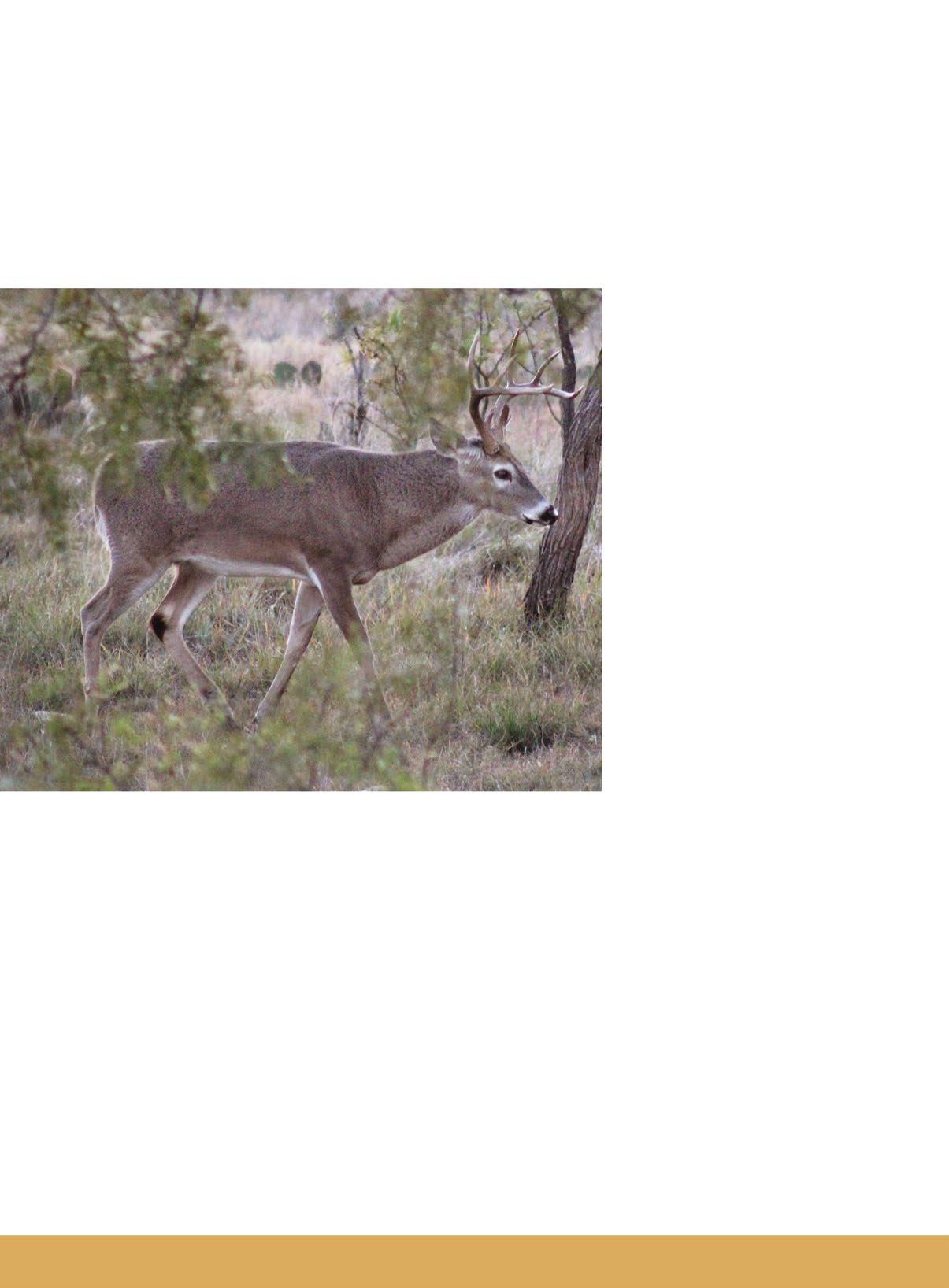
Waterfowl
Duck and goose hunting last year faced unprecedented times due to COVID-19, which led to cancellations of the joint waterfowl count conducted each year by the U.S. and Canada. While this year’s count will shine more light onto just how many ducks and geese are coming south, the overall hunting outlook remains good for hunters with access to great habitat, namely water that doesn’t disappear if things get dry.
Kevin Kraai, waterfowl program leader with TPWD, noted that many species have continued to buck the trend in what had been a decline in some different populations.
“From a species standpoint, I’m hearing blue-winged teal did well again, as well as northern pintails and gadwall. It’s those species, as well as shovelers and green-winged teal which nested in the eastern Dakotas, that did very well,” he said. “Some of those species like bluewings, greenwing and shovelers could be near record highs, so those things are all good for traditional waterfowl hot spots like the coast and the Rolling Plains.” Like the other game listed, waterfowl are heavily dependent on water, which can drive them into new locales, especially if rainfall was lacking through the summer and into early fall. “Going into the summer, most of the state was looking really good with record moisture and even record flooding in some places,” Kraai said. “However, when we have excessively dry years, we actually record better waterfowl harvests and higher success rates because the birds don’t have as many places to go with less water on the landscape.” Kraai noted that some traditional goose hunting hot spots have undergone significant changes in recent years, making hunts tougher, especially for Canada geese. “In the Panhandle, your goose hunts are going to be much closer to town as we’ve got concentrations of birds in cities. Most cities in the Panhandle and Rolling Plains now have either town lakes or effluent ponds for water and geese heavily key on those areas during dry conditions and stay there,” he said.
“In looking at coastal marshes and prairies goose hunting, there has been a massive change in the landscape that has altered locations where waterfowl can roost, as well as the amount of food and water available. We don’t detect Canadas anymore in our surveys there. They’ve almost completely left the coast.”
As with other species, hunting pressure certainly plays a role in where ducks and geese will go and stay, something hunters should consider this fall and winter.
“On the coast, we’re seeing strong evidence of redheads avoiding certain locations due to hunting pressure because so many people are pursuing them. We’re also seeing duck numbers in places where they weren’t 10 years ago,” Kraai said. “Waterfowl are now utilizing non-traditional habitat including locations like stock ponds and other industrial sources that hold steady water. That bodes well for the ducks and geese, which can stay away from hunters.”
White-tailed deer entered last fall’s hunting seasons in good shape and it’s a good bet they will again this fall, barring any unforeseen circumstances.
Notable hunting changes for 2021-22 seasons
Hunters will see some changes this fall to our Texas hunting frameworks, including the elimination of the experimental pronghorn season in the northern Panhandle and extension of the general pronghorn season from nine to 16 days statewide. There also is an addition of two days of hunting opportunity in the Special White-winged Dove Days within the South Dove Zone.
Among notable alterations approved back in the spring by the TPW Commission are:
Add crossbow to the definition of lawful archery equipment
Remove the prohibition on trailing wounded deer with dogs in Angelina, Hardin, Nacogdoches, Orange, Shelby, and Tyler counties; In addition, allow the trailing of wounded deer to no more than two dogs on a leash in Jasper, Newton, Sabine and San Augustine counties
Modify the muzzleloader definition to clarify only the bullet or projectile and powder must be loaded through the muzzle
Align spring and fall wild turkey hunting seasons with consistent North and South Zone boundaries along Highway 90 starting in fall 2021
Allow squirrel hunting statewide by opening the remaining closed counties to a year-round hunting season; the traditional East Texas squirrel season, May 1-31 and Oct. 1-last Sunday in February remains unchanged.
Turkeys
Turkey hunting remains a great pursuit in Texas, where we’ve got the largest population of the Rio Grande subspecies in the country at roughly a half-million birds in wet years. While the spring outlook will remain to be seen, there are big changes to the overall pursuit across the state.
“We aligned our north and south zone boundaries for the spring and fall seasons, so those times dates are really going to kind of look like our white-tailed deer regulations now,” Oldenburger said. “For years there’s been some disconnect between those frameworks. Depending on what county you were sitting in, you might be in the south zone for the fall and the north zone for the spring, and that never really made much sense. We looked at simplification of the regulations and it’s something we’ve received a number of complaints about in the past decade.”
Oldenburger also noted there is a big change to the state’s “one-gobbler” counties.
“Those south-central counties are moving to mandatory harvest reporting,” he said. “We received little response in those counties (Bastrop, Caldwell, Colorado, Fayette, Jackson, Lavaca, Lee, Matagorda, Milam and Wharton) in regard to our small-game harvest surveys, so we really had no way to make any management decisions since we didn’t know if the harvest was increasing or decreasing. Folks who are successful in those counties will need to go online or go to the My Texas Hunt Harvest app. It’s the same requirement for those hunters taking antlerless deer in those counties or those who’ve hunted eastern turkeys.” TPWD, said the department continues to seek out new opportunities for hunters who don’t have hunting access on private lands.
“We saw increased license sales across the board and our permits went up, as well as our draw system applications and Big Time Texas Hunts applications. Everything increased substantially from the year before largely due to the pandemic. Folks had the distractions of everyday life somewhat taken away and got back to what’s important, like being in the outdoors.
“In our draw system we’ll continue to have a lot of the same favorites, but we’ve added a number of private lands opportunities, including hunts for quail, turkeys and feral hogs. We’re always looking to add opportunities for the public hunting program, especially with increased demand. We also have added more national wildlife refuge hunts so hunters will start seeing those in the public draw system.”
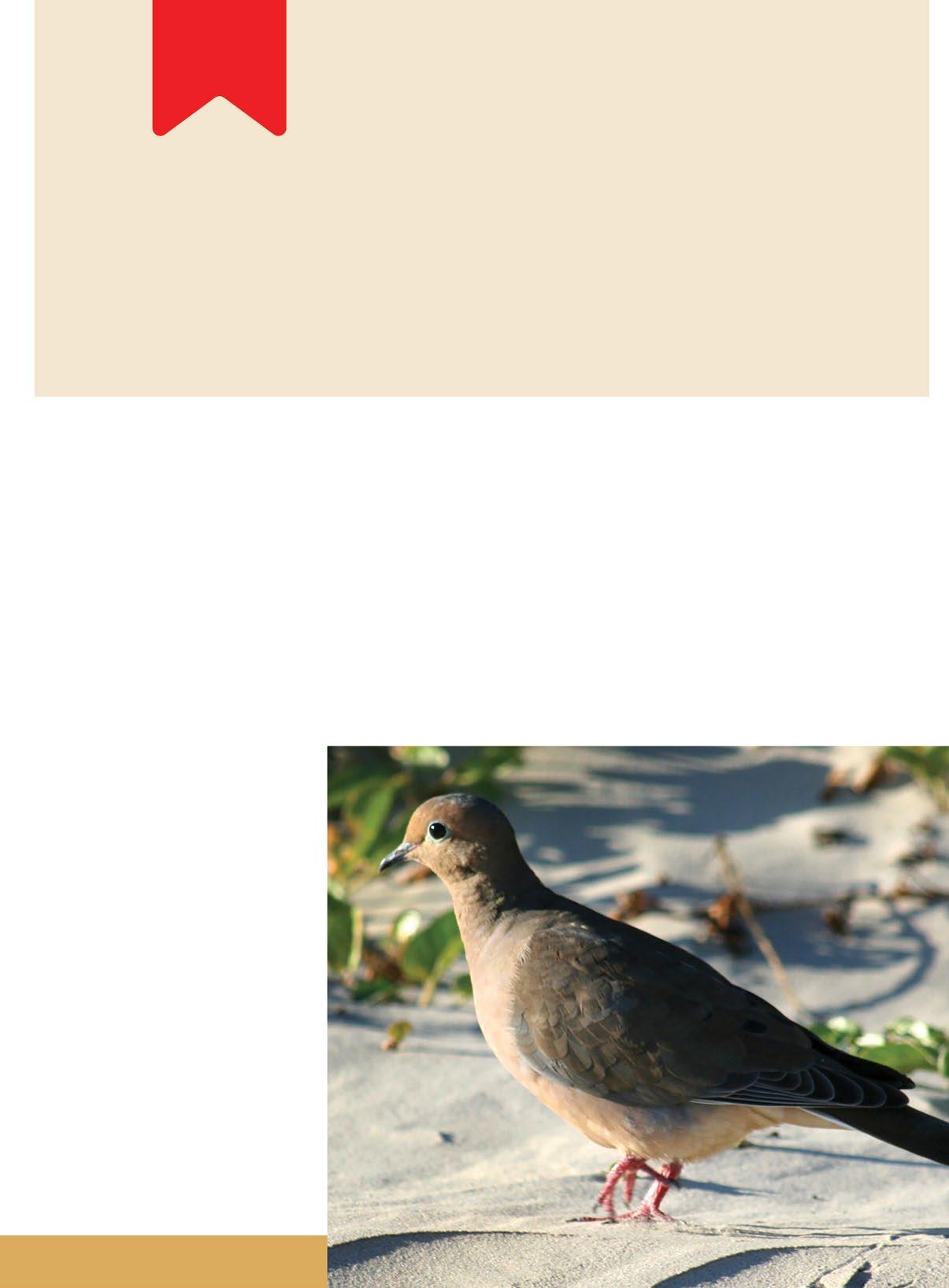
Public Hunting
Justin Dreibelbis, Private Lands and Public Hunting Program Director with
The mourning dove remains the most harvested game animal or game bird in Texas, with hunters bagging in excess of five million mourning doves every fall and winter.
